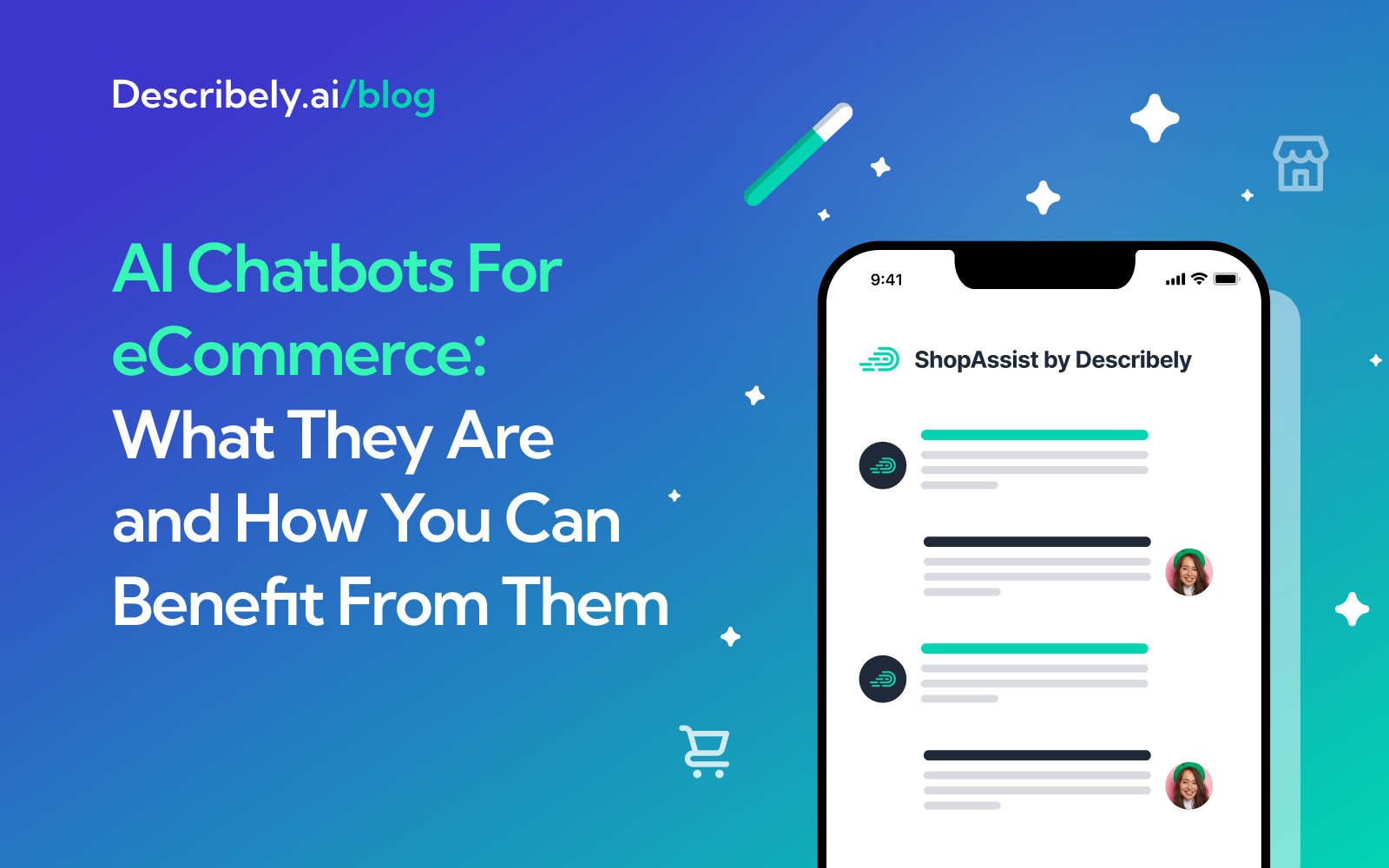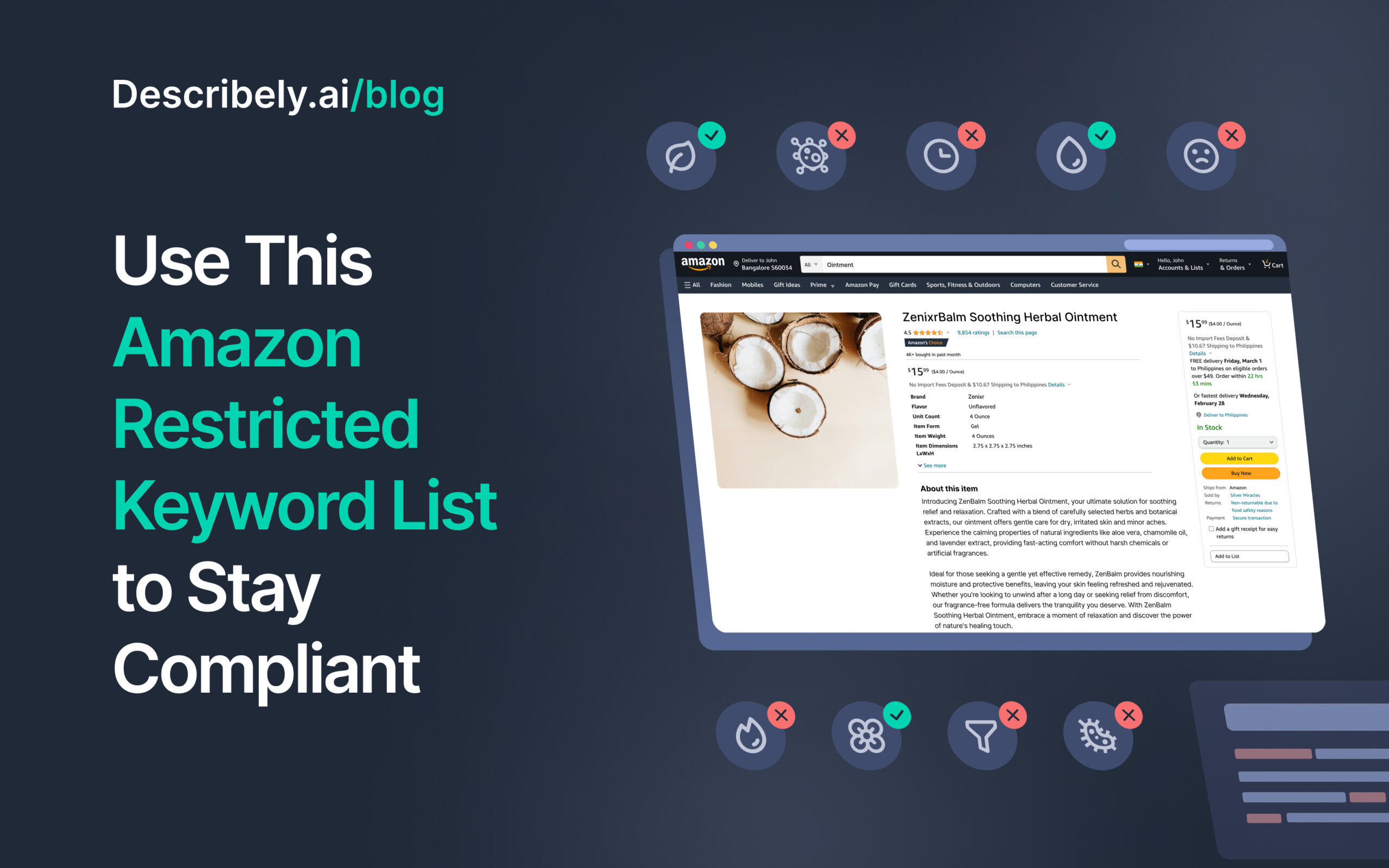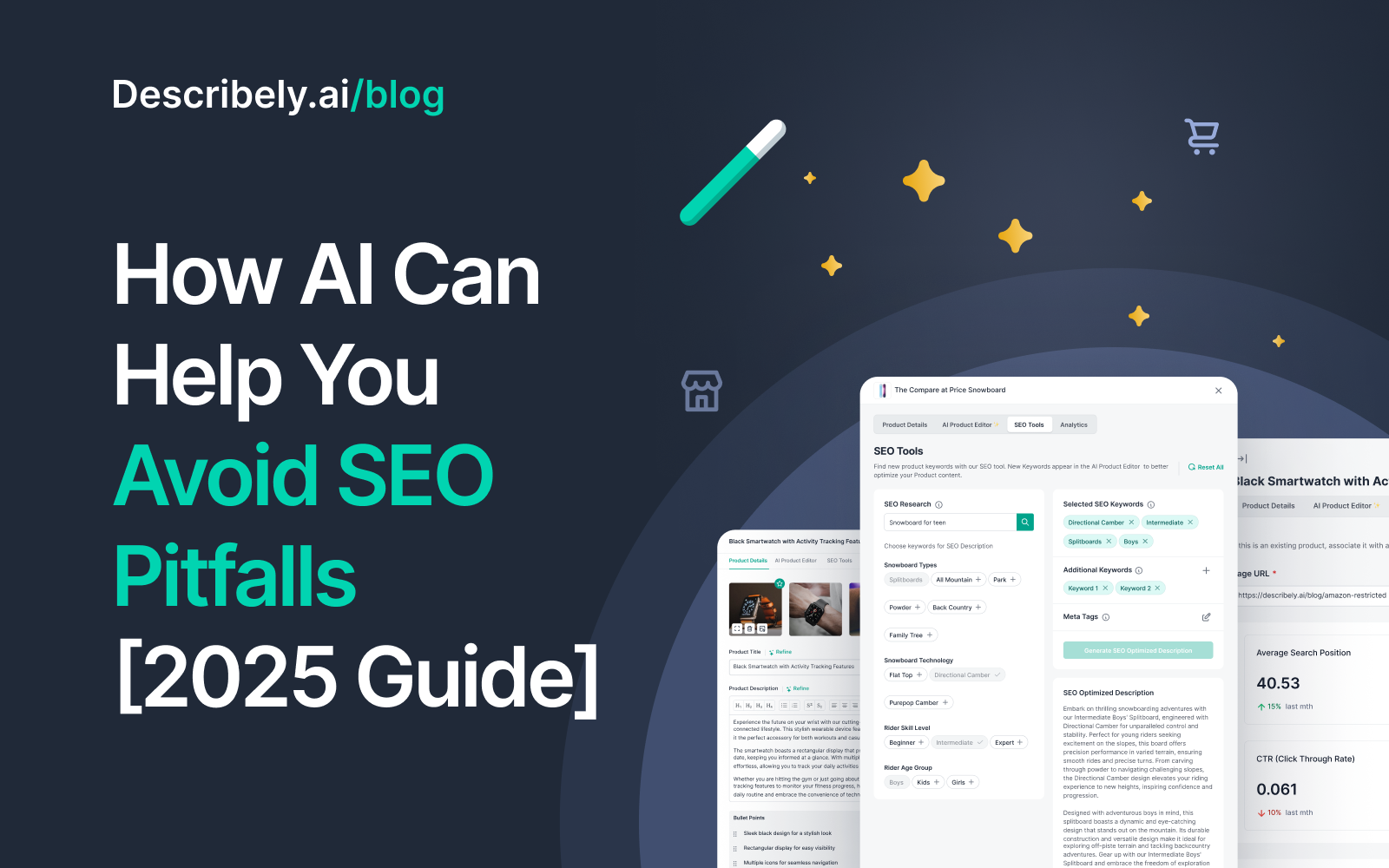
AI Chatbots For eCommerce: What They Are and How You Can Benefit From Them
As eComm/retail customers, we might be using AI chatbots in our daily lives far more than we realize.
For example, if you’ve shopped from H&M, you’ve probably tried its Kik bot for styling recommendations.

Or, if you’re a loyal customer of Levi’s or Burberry, you might’ve used their respective chatbots to understand your sizing, get new store directions (or book an Uber ride there), or do something else entirely!
Beyond these examples, eCommerce chatbots have become a go-to solution for global brands looking to speed up customer interactions without overwhelming human support teams.
As these chatbots evolve and become more sophisticated, they’re making shopping smoother—reducing friction, handling repetitive queries, and driving sales, all at once.
In fact, case studies show that the adoption of AI chatbots has improved customer satisfaction by 67%, reduced support calls, and improved savings.

Take Alaska Airlines as another chatbot example—their implementation was so effective that it drastically reduced the need for live support within its first year.
But, back to the basics. The real question is how can chatbots help your business, and what use cases they can cater to. On that note, let’s dig into the article to get all the need-to-know details.
What Are AI Chatbots for eCommerce? (A Brief Summary)
Before we dive further, here’s a quick rundown: AI chatbots are your 24/7 virtual sales and support reps. They answer questions, recommend products, and handle multiple other customer interactions. In sum, they allow your customer-facing teams to save time and also keep your customers happy.
The Argument on Why to Use eCommerce AI Chatbots vs. Human Customer Support
1. Cost-Benefit Analysis
The cost of hiring a human customer support team vs. an eCommerce chatbot platform wildly differs in pricing.
For reference, the average cost per ticket for human customer support is reported to be $22, whereas the consumption fee of AI chatbots is anywhere between $0.006 to $1 for text/audio requests.
It would seem like an unfruitful and costly endeavor to leave the most basic queries and FAQs to your human customer support when there are AI chatbots out there that can do the same task for a fraction of the cost.
Instead, we’d recommend optimizing the workflow of your support requests and leaving the more complex queries in the hands of a human customer service team and letting AI handle simple queries.
2. 24/7 Multi-Language Support
While most human customer service teams can only operate for a specific period of time (e.g., Monday through Friday between 9-5) and provide support in a select few languages (e.g., English and Spanish), there are no such limitations when it comes to AI.
In fact, it can operate 24/7, answering user queries in different languages (which would be an excellent asset for your business if you’re currently scaling or have a diverse target audience situated in different countries).
3. Brand Cohesiveness
It’s also much easier to train a specific AI tool vs. an entire executive team to maintain your brand’s specific guidelines and tone of voice while conversing with the customer (especially considering the support industry sees heavy turnovers, so the training would need to be repetitive).
For example, whenever you chat with Philadelphia’s Facebook chatbot, you’ll notice it maintains a super-friendly persona by using tons of emojis and gifs and sticking to a natural style of talking.
This is most probably just a one-and-done endeavor on the backend, and it doesn’t require constant changes in talking style and tone!

4. Access to Millions of Data Points
Last but not least, it’s easier for AI chatbots to pull through millions of data points on your website (as well as your archived pages) to answer customer questions more precisely and efficiently.
On the flip side of this, if one of your users asks your customer support representitive a query that might be off-script, the user might need to be on hold for a moment or two while your support rep tries to find an adequate answer.
Use Cases of eCommerce AI Chatbots
1. Reduction of Cart Abandonment
Did you know more than 88.6% of customers buy impulsively online and spend around $81.75 per transaction?
That means a significant portion of your sales likely comes from customers making quick buying decisions. But for that to happen, they require immediate access to all the need-to-know information to prevent any second-guessing.
If a customer hesitates due to an unanswered question, even a small doubt can lead them to abandon their cart. This is where an eCommerce AI chatbot becomes invaluable, providing instant answers to keep your users moving toward checkout.
Here’s the real-life implication of this theory: When Attic Salt used WhatsApp’s AI chatbot to answer product and process-related queries, it helped them reduce cart abandonment rate by 10% and increase cart recovery by 57%.
2. Helping Customers With Personalized Recommendations
Another important use case of AI chatbots is that they can provide users with personalized recommendations. For example, H&M, eBay, Lego, etc., are all known for having chatbots that can tailor responses based on the user’s requirements.

In other instances, some chatbots have become so refined that they can consider historical conversations and customer interactions to provide more accurate results.
For example, Lenskart’s chatbot asks you to input your phone number so it can track your previous order history and provide you with a resolution. Similarly, Shopify’s chatbot asks you to sign in to give contextual answers.
3. Answering FAQs
Pick any AI chatbot out there, and one of the primary features they’ll have is being able to answer FAQs such as delivery timelines, warranty, returns, etc. For example, the chatbots of American Express, KLM, Kiehl’s, Tesco, etc., all have this capability.
Now, what’s the result of using AI chatbots for such a use case, you ask? Well, according to a study, a large eComm brand reduced its support costs by 10% and lowered incoming calls by 40-45% while still maintaining a customer satisfaction score of 90% by simply handing off FAQs to a chatbot online.
4. Understanding Customer Behavior Patterns
On the backend, these AI chatbots can become an essential analytical tool for your business, by helping you understand customer behavior patterns, such as what time they shop, which page(s) they have most questions on, what products require more info, etc.
For reference, AI chatbots like Describely’s ShopAssist, Omind.ai, Reve Chat, etc., all have reporting features through which you can find customer sentiments, identify patterns, track the accuracy of your responses, etc.

5. Upselling or Cross-Selling Products
By providing recommendations on frequently bought-together items and/or best seller items, eCommerce chatbots can easily increase upselling and cross-selling opportunities (e.g., while this is not a 100% AI-chatbot specific, Amazon has managed to bring in 35% of the total sales on the platform by providing personalized recommendations like these).
In another instance, Marshalls improved up-sells and cross-sells by 34% on online channels by simply using a chatbot online.
6. Gathering Feedback for Improvement
eCommerce AI chatbots are generally multi-faceted when it comes to gathering feedback. That’s to say, they can not only collect feedback through surveys, but can also analyze audience sentiments, ask users to provide product reviews, and request ratings on the quality of the resolution provided.
For example, the chatbots of Zomato, Swiggy, Uber, and Cleartip ask you to rate the customer experience at the end of the conversation to track the effectiveness of their responses.

7. Becoming a Marketing Channel
Another important use case of eCommerce chatbots? You can easily make them a part of your marketing distribution channel and leverage them to tell customers about ongoing offers and promotional campaigns.
Alternatively, they can be used for multi-channel marketing (e.g., you can engage with your customers through your chatbot and ask them to sign up for your newsletter or social media channels to avail a specific discount coupon).

8. Assistance Through Visual or Voice Search
Last but not least, modern chatbots are even equipped with search capabilities through visual or voice search.
That’s to say, you can upload images of products you like or provide instructions through vocal descriptions, and they’ll come back with the closest replica.
For example, both Meesho and HotelPlanner have well-developed multilingual voice bots, specifically created for their diverse audience. Similarly, the chatbots of Myntra, eBay, American Eagle, ASOS, etc., have visual search capabilities.

How to Choose an AI Chatbot For Your Business?
It’s easier to choose a chatbot once you’ve identified the exact use case and goals the chatbot would be used for in your business.
For example, if you wish to boost engagement, look for an eCommerce AI chatbot that can personalize customer experiences and answer every query based on their shopping history and preferences.
If support is the focus, opt for a chatbot with strong natural language processing capabilities that can be adopted in multiple languages and can identify which issues require hand-off to humans.
Most importantly, the right chatbot feels less like a robot and more like a helpful guide—so, always look for reputable brands that deliver a sophisticated and custom solution like this.
On that note, perhaps this might be the right time to introduce you to our eCommerce chatbot, ShopAssist, which can provide human-like interactions and can be completely tailored to your brand requirements.
Introducing ShopAssist

ShopAssist is Describely’s 24/7 concierge, always ready to answer customer questions. This is an especially helpful solution if you’re an eCommerce business looking to increase sales and reduce friction in customer interactions.
Here’s how this solution stands out from what’s available in the market:
- It doesn’t require any heavy coding and can be set up within minutes.
- You can tailor the entire chatbot experience based on your brand requirements and style guide.
- It can provide personalized recommendations, answer FAQs, and crawl your website to find accurate product data.
- It has analytical features, and can identify trends, spot common issues, recognize customer pain points, and provide suggestions on website and UI/UX improvement.
- It’s completely scalable and can grow with your business!
According to our tests, you can free up to 80% of your busy time with our ShopAssist chatbot while simultaneously driving sales and reducing your customer support costs.
Where To Go From Here?
The chatbot market size is perpetually increasing, currently clocking a whopping 23.3% CAGR. We can see this growth happening in real-time with the increasing adoption of AI chatbots, especially in the eComm space.
In the next few years, as they become a standard practice, you’ll need to evolve and implement AI chatbots in your business, sooner or later. And when this time comes, try to look for a solution that can become a seamless partner, not a headache that causes more friction in customer experience.
Perhaps when you’re ready to move forward, we can give you a tour of ShopAssist and show you exactly how this can become the perfect solution for your business. If that time is now, feel free to book a demo with our team, and our team will be happy to help you out!
Juwaria Merchant Author Bio
Juwaria is a freelance writer specializing in the fields of SaaS, marketing, and eCommerce. Backed with 4+ years of experience, she helps brands build content that adds value to their business. In her free time, you can catch her reading her favorite books or studying the latest trends online.




